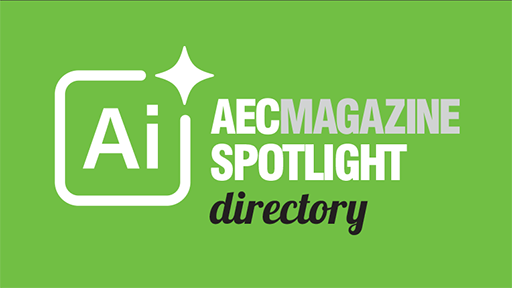How does Graphisoft plan to put AI to work on behalf of its customers? Martyn Day speaks to product development execs from the firm to hear their views
In the past, individual brands under the Nemetschek umbrella (of which there are 13 in total, including Graphisoft, Allplan, Bluebeam, Vectorworks and Solibri) were largely left to themselves when it came to developing new solutions and exploring new technologies.
That situation has changed over the past five years, with an increasing focus on sharing technologies between brands, combining those brands and developing workflows that intersect them.
In response to growing interest in artificial intelligence (AI), Nemetschek created an AI Innovation Hub in May 2024, with the goal of driving AI initiatives across its entire portfolio and involving partners and customers in that work.
The stated intention is not just to accelerate product development, but also to test and explore the deployment of AI tools such as AI Visualizer (in Archicad, Allplan and Vectorworks) 3D drawings (part of Bluebeam Cloud), and the dTwin platform. Nemetshek has presented this strategy as AI-as-a-service (AIaaS) to customers and partners.
Explaining Graphisoft’s approach to AI, CEO Daniel Csillag tells us, “There will be new services where we charge a subscription rate and not a perpetual license. Of course, inside of Graphisoft, we’re also trying to use more and more AI – for example, in customer service, such as tools that alert us to a certain user behaviour. Since this might give us an indication that the customer is unhappy, we can reach out proactively to them,” he says.
“Currently there’s a lot of brainstorming going on. I encourage the team to not talk about step-by-step improvements, but also to consider a jump forwards. I’m telling my team: be creative and sometimes disruptive.”
With those words probably ringing in their ears, I also spoke with Márton Kiss, vice president for product success, and Sylwester Pawluk, director of product management. Both executives have active roles to play in the shaping of Graphisoft’s core technologies.
The first Graphisoft AI product was AI Visualizer, a rendering tool that uses Stable Diffusion to produce design alternatives from simple 3D concepts. Graphisoft’s original hypothesis was that users were afraid of putting their IP on the cloud, so the company created a desktop, on-device version, which came with limitations.
“From actually talking to users, nobody is afraid of the cloud now, so with Archicad 28 (currently in technology preview), we have a cloud back-end for AI Visualizer,” says Kiss.
“We have also been experimenting with AI Visualizer Live, which is a camera looking at physical models, simple building blocks, rendered by an AI text prompt. We are thinking about how we productise this, as it’s a very practical way of using existing generative AI for concept iteration,” he says.
Find this article plus many more in the Sept / Oct 2024 Edition of AEC Magazine
👉 Subscribe FREE here 👈
From conversations with Pawluk, it’s clear that Graphisoft is looking to tackle this problem. The great thing about specification books is that they have a rigid formula and, through optical character recognition, are machine readable. They might include 2D and isometric drawings, too. So Graphisoft is experimenting with applying AI to read these catalogues and conjure up GDL-based 3D BIM objects that contain all the manufacturer’s metadata (N.B. GDL objects are parametric objects used within Archicad).
We have been experimenting with AI Visualizer Live, which is a camera looking at physical models, simple building blocks, rendered by an AI text prompt. We are thinking about how we productise this, as it’s a very practical way of using existing generative AI for concept iteration – Márton Kiss, vice president for product success, Graphisoft
As Pawluk explained: “With all generative models, what you need is a large amount of data and good-quality data. What we need first is a large number of good-quality GDL components to train the AI. In our development, the models, the speed of creation and complexity is rapidly increasing. We aren’t working with any specific vendors yet. It’s still in the exploratory stages at the moment.”
On the subject of autodrawings, we knew last year that Graphisoft was exploring this area, as well as its reverse – generating 3D BIM models from 2D drawings. Kiss confirms that building a bridge here is a very important part of the workflow.
Executives at Graphisoft also like the idea of assembly-based modelling, where pre-configured spaces are created, instead of modelling with walls, doors, windows. “If you have someone creating those assemblies for you, or generated in the right way, a BIM model, from assembly, is actually going to be a very well-structured BIM model,” says Pawluk.
“Then later in the design, when producing the drawing, it’s already got a structure to work from. AI would be brilliant then.”

Catalogues and autodrawings
In this recent article we discuss how the quality of downloadable manufacturing content can be a hit-or-miss affair. It’s very rare for manufacturers such as Velux or Hilti to create full libraries of BIM objects that designers can add to their models.
Generic or personal AI
From our discussion, it was clear that Graphisoft is looking at developing AI capabilities that would benefit all designers, like AI Visualizer.
However, the company also understands the need for individual customers to train AI on their own models and past projects, which are not shared to train the generic AI.
Kiss comments: “This is where you start, from building your own ‘assemblies’ – rectangles with pre-loaded details essentially – and then use them as building blocks for hospitals, schools, whatever, based on what you have created in the past.”
While Kiss and Pawluk could not go into specifics of what such an app would do, they concede that the group has already trialled collaborative working and that this work ended up being presented to the Nemetschek board.
“The whole concept around this was to make sure that we can deliver those proof of concepts and productise initiatives very quickly. I think that has been proven on this occasion,” says Pawluk.









